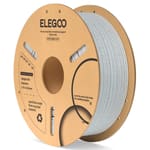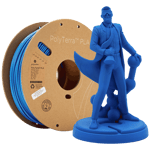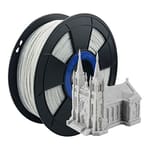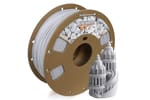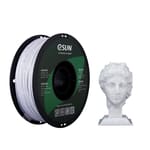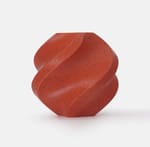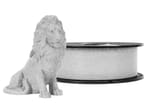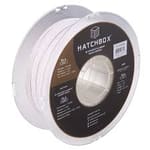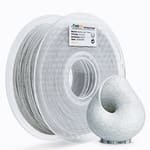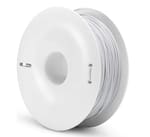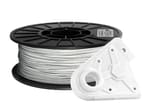If you like 3D printing busts, sculptures, or building models, you can achieve a realistic marble-like finish and appearance with marble PLA. Marble PLA is specifically made to create a stone-like appearance across the surface of your prints, producing a gorgeous print right off of the print bed.
In this article, we’ll go over the top brands of marble PLA while giving you some guidance on how to choose which type of marble PLA is right for you. For every brand, we’ll provide a description of the filament and some printing tips. Let’s get started!
Considerations
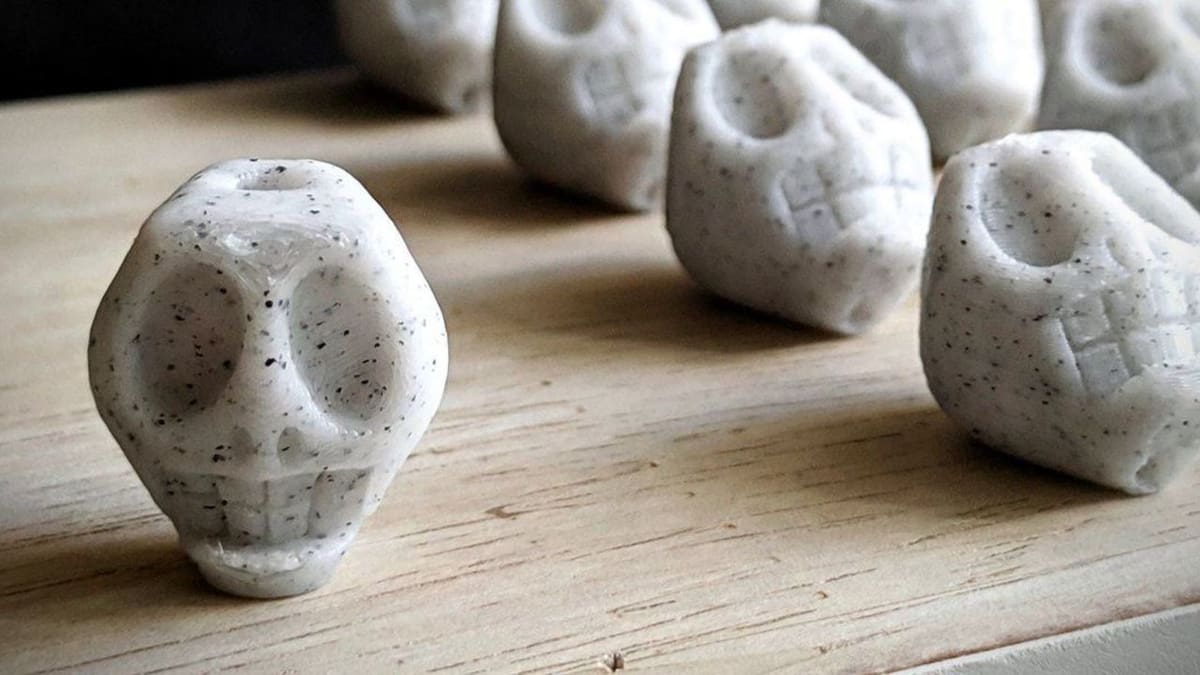
We consider the brands featured on this list to be among the best in marble PLA. When compiling this list, there were a few key features that we wanted to see from each brand.
The first and most important aspect of a good marble PLA is that it is popular within the 3D printing community. Makers know best. They will let you know if a brand of filament holds up to their standards or not. You’ll find many of our picks are brands that you’re probably already familiar with in the 3D printing community.
Secondly, ease of printing is a big concern for us, especially when dealing with marble PLA. Many of our selections are known to be very easy to work with, with few requiring drastic changes to your hardware or slicer settings.
Lastly, we want our picks to have a realistic marble appearance. We’ve chosen filaments that we believe provide a compelling appearance that fits the marble aesthetic, rather than simple, colored filaments.
With these features in mind, let’s get to our list of the best marble filaments!
Printing Tips
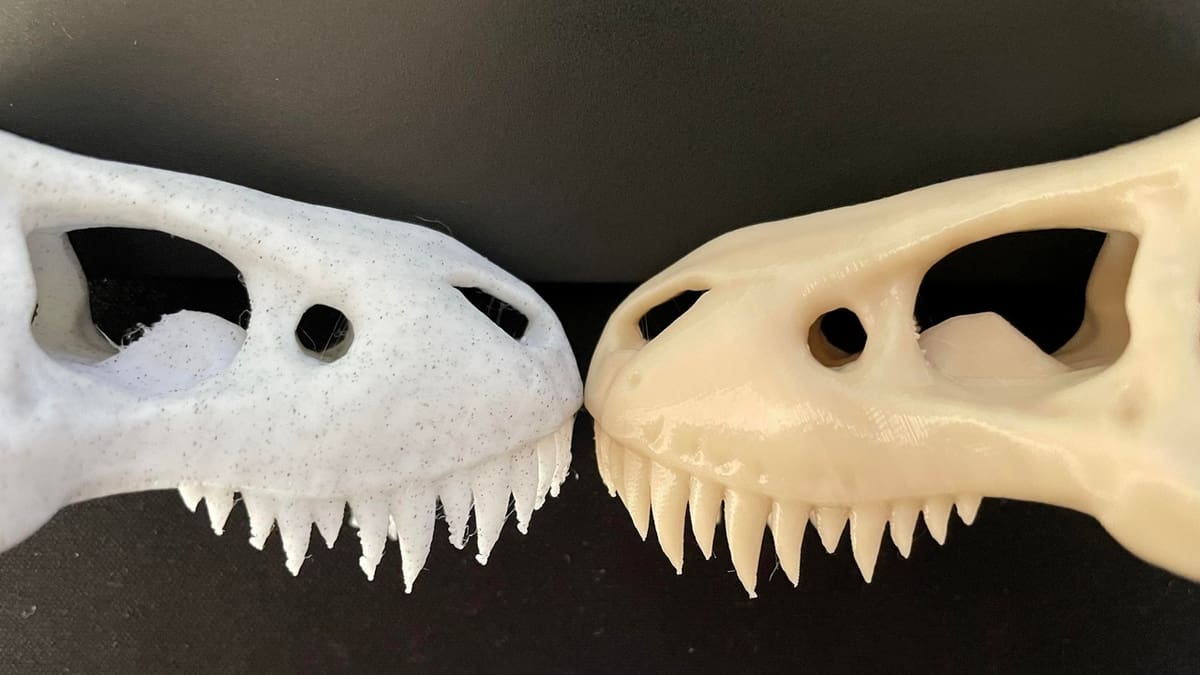
Marble PLA isn’t like your typical PLA. The method used to make it, as well as variations from brand to brand can create some printing issues for those who are new to the filament. We have a couple of tips to help you get the most out of your new spool of marble PLA.
Colored PLA vs Additives
Most marble PLA is made using either a color mixture of PLAs or by mixing additives into the extrusion. Actual rock dust, PETG, nylon, and TPU are popular choices, as these filaments are more resistant to heat than PLA. Marble-colored PLA should print almost the same as normal PLA, but the brands that use additives may require some changes in your print settings or printer hardware.
A hardened steel nozzle is recommended to avoid abrasion when printing with additives, though not all brands will require one. Manufacturers will let you know if their filament contains abrasive additives, so be sure to check your filament provider’s website for their recommended settings.
Clogging and Layer Adhesion
While many users have reported printing marble PLA perfectly without any changes to their printers, there are plenty of users who experience constant clogging and poor layer adhesion using stock settings.
Some marble PLA, specifically brands that use additives, are known to create clogs in the nozzle. This is usually caused by the additives building up inside the nozzle. These additives do not melt at the lower temperatures of PLA. For example, PETG additives require a higher temperature, while stone additives will not melt at all. To combat this, we recommend using a 0.6-mm nozzle to allow more wiggle room for these additives to flow.
Marble PLA is known to have worse layer adhesion than regular PLA as well, due to the additives. This issue is magnified when dealing with partial clogs in the nozzle, causing under-extrusion and problematic layer adhesion. While raising your nozzle temperature can help, swapping to a larger diameter nozzle, such as a 0.6-mm nozzle, solves this issue for most brands.
Elegoo
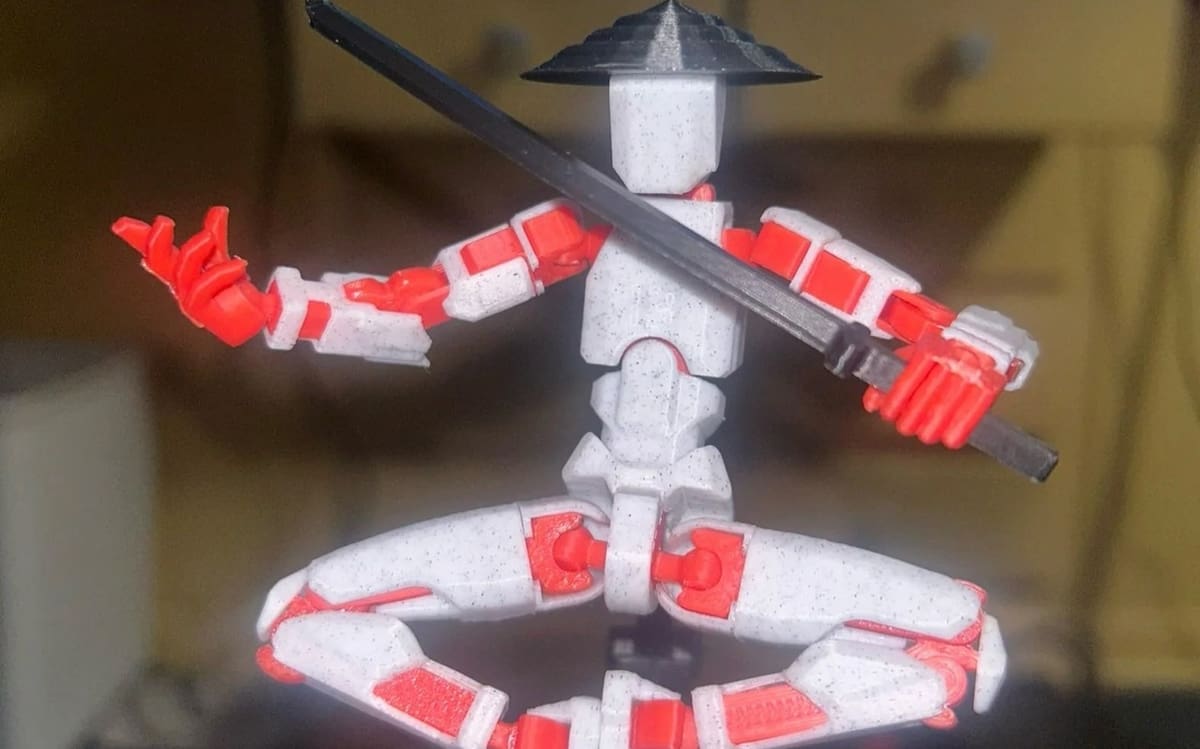
Elegoo is a notable 3D printer manufacturer, with their Neptune line of FDM 3D printers being their most popular by far. Like many printer manufacturers, they have released their own line of filaments, including a marble-colored PLA.
The additives in this particular blend are finer than most, leading to reduced clogging while maintaining a realistic marble appearance and texture. Elegoo specifies on their website that this marble PLA is not abrasive and will not wear down a brass nozzle. While we haven’t tested it ourselves yet, users have printed the filament using a 0.4-mm diameter nozzle with no issues, which backs up their claim of being clog-free.
Elegoo is known for their quality filament and lower-than-average prices. Many makers state that Elegoo is their go-to brand for cheap bulk filament that just works.
- Color: Marble
- Sizes: 1.75 mm (1 kg)
- Recommend settings: Hot end 190-220 °C; heated bed 50-65 °C
- Price per kg: ~$20
PolyTerra
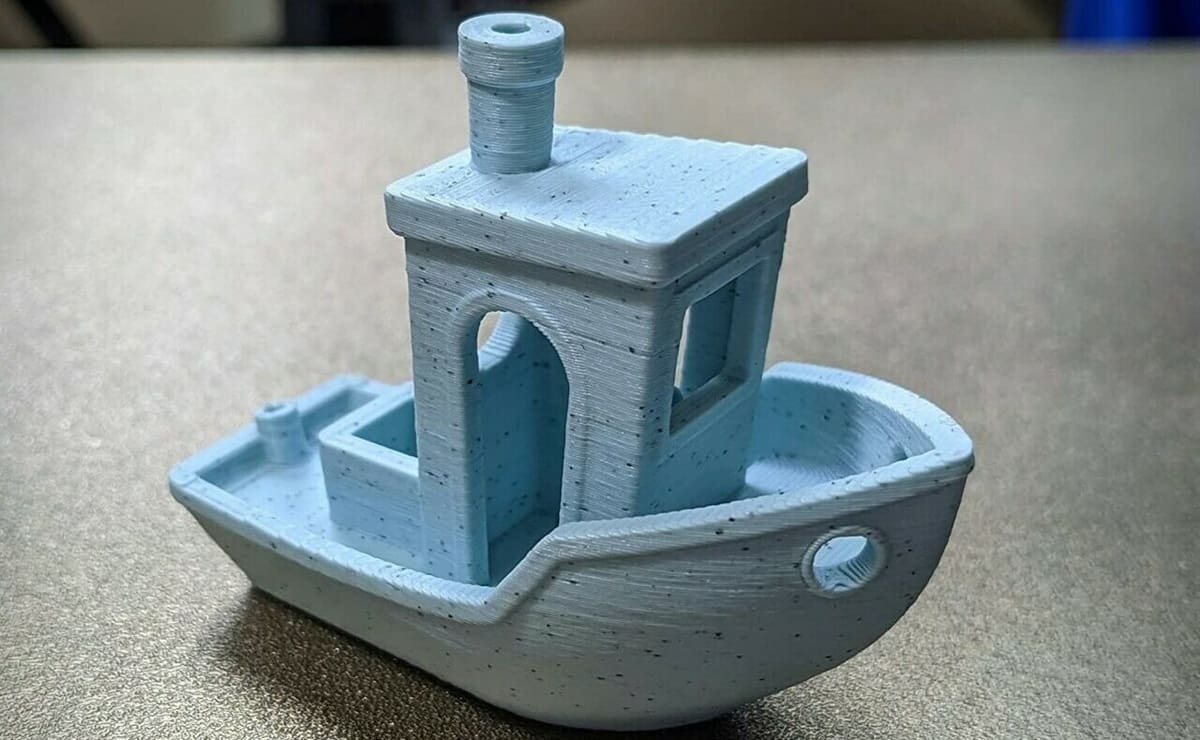
PolyTerra PLA is made by Polymaker, a unique brand that offers to plant one tree for every filament purchased. Their prices are reasonable, too. Since they offer a range of different colors, you can get some nice-looking prints.
Reviews of their filament, however, vary widely. One thing that stands out in the reviews is mention of requiring adhesive to help it print, especially on larger prints, as it likes to warp and doesn’t adhere too securely to the bed. After these amendments, users have mentioned that it seems to print pretty well. The manufacturer also recommends printing at 30-70 mm/s.
- Colors: White, slate gray, brick, limestone, sandstone
- Size: 1.75 mm (1 kg)
- Recommend settings: Hot end 190-230 °C; heated bed 25-60 °C
- Price per kg: ~$22
Giantarm
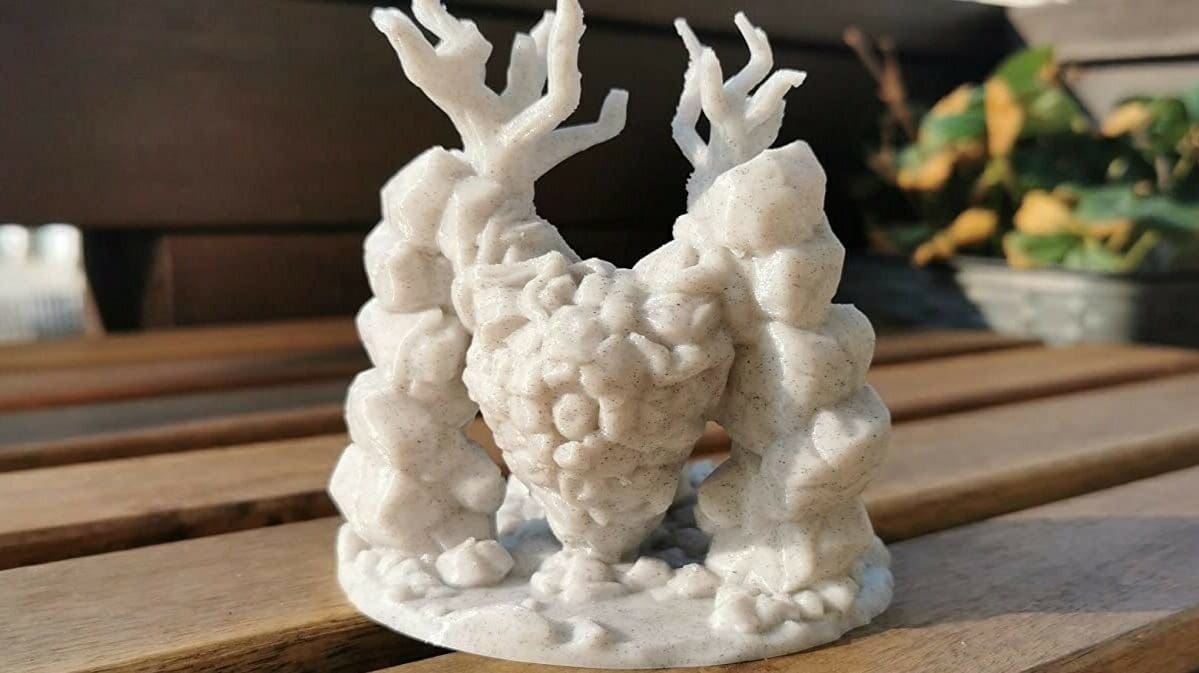
Giantarm is a subsidiary of Geeetech that primarily focuses on selling filaments to the UK and European markets. The manufacturing facility is slightly different from Geeetech’s, so it has been able to maintain a higher filament quality than its parent company.
Giantarm’s filaments are popular, especially their marble and glow-in-the-dark ranges. Many users have expressed their love for both the colors and consistency of the products. Often these filaments print seamlessly with few issues.
Some users have commented about how reliable their filaments are. While marble PLA can sometimes be tricky to print, reviewers have reported being able to print with no issues and good bed adhesion. Personally, we found that while the filament adhered well, there were a few nozzle clogs when printing below 210 ºC.
- Colors: Blue, brown
- Size: 1.75 mm (1 kg)
- Recommend settings: Hot end 190-220 ºC; heated bed 40-60 ºC
- Price per kg: ~$24
Ziro
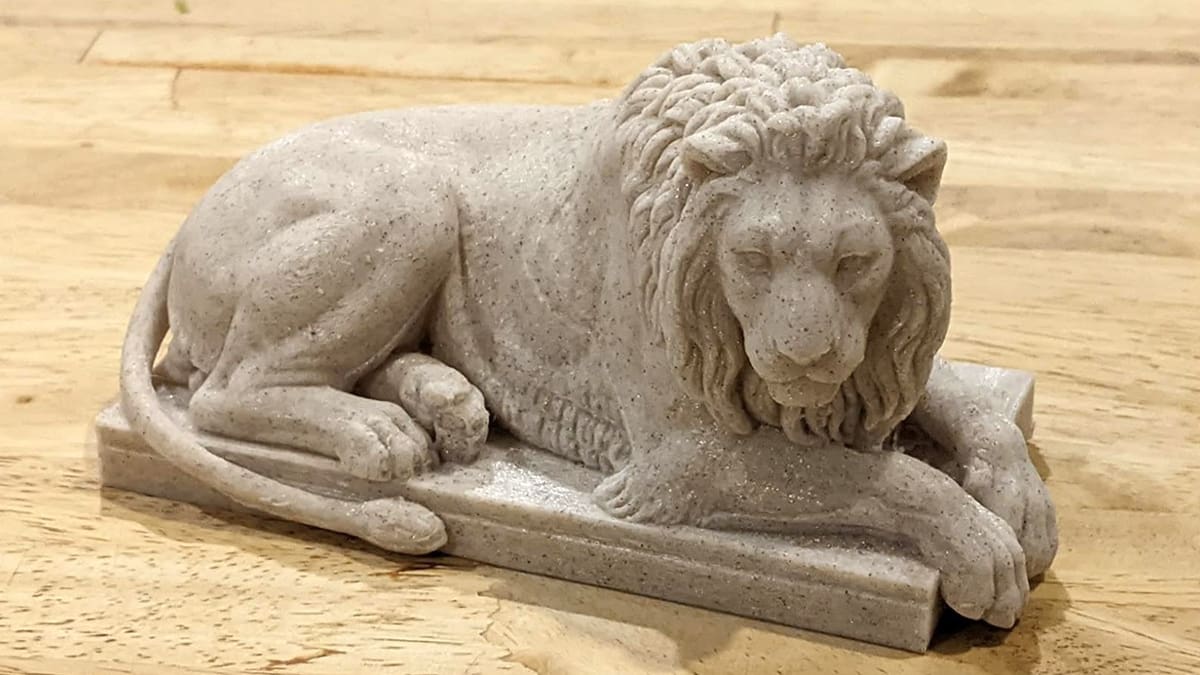
Ziro is a filament company that makes a lot of different filaments, from regular PLA to carbon fiber and nylon. Ziro’s marble PLA, known as Stone PLA filament, is biodegradable, and from what Ziro says about it, tough. Stone PLA is available in three variations: marble white, straw, and a combination of blue and white.
The manufacturer indicates that Stone PLA releases no odor and doesn’t warp, either. One reviewer at Amazon observed how slick the filament is, causing the extruder gears to slip when pushing it, so maybe increase the extruder arm tension when printing. Ziro recommends using a 0.4-mm nozzle size for printing, as well as a print speed of 30-70 mm/s.
- Colors: Marble white, blue and white, straw
- Size: 1.75 mm (1 kg)
- Recommend settings: Hot end 190-220 °C; heated bed 50-70 °C
- Price per kg: ~$26
Overture
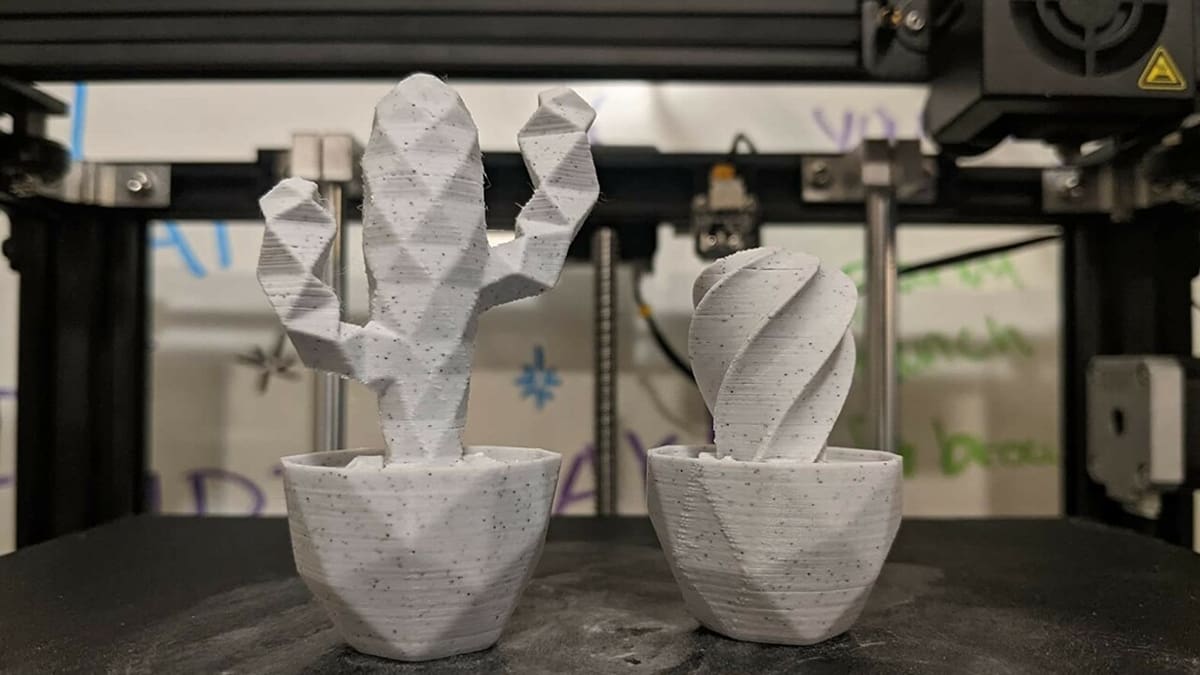
Overture is a Chinese company specializing in new and exotic filaments ranging from carbon fiber to space gray PLA, and their Rock PLA series is no different.
If you’re looking for variety, you can choose between their white, fossil, and sedimentary options. They have an interesting texture and a rock feel, as the manufacturer claims. Those who’ve printed with it describe the texture as softer than most of the other marble PLA options.
However, as a result, it can sometimes struggle to print infill. They’re designed for sharp statue-themed prints, but print like ordinary PLA. Overture recommends using a raft for better layer adhesion. Another positive of this filament is that it comes with a cardboard spool.
- Colors: Rock white, fossil rock, sedimentary rock
- Size: 1.75 mm (1 kg)
- Recommend settings: Hot end 190-220 °C; heated bed 50-70 °C
- Price per kg: ~$27
eSun
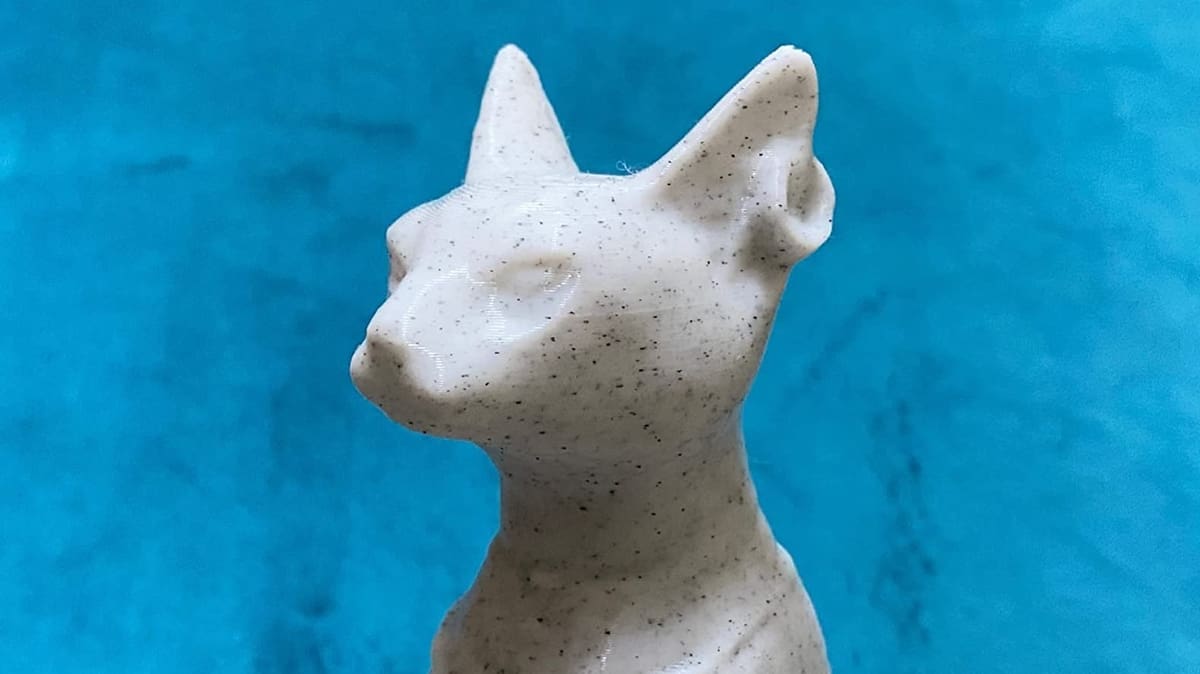
eSun is a popular filament manufacturer that also makes resins, printers, and 3D pens. eMarble is eSun’s marble PLA brand, and according to some retailers, it’s biodegradable and FDA-approved food safe.
eSun reports that eMarble filament has a consistent diameter, low shrinkage, and is very tough. The manufacturer recommends printing this filament with a print speed of 40-100 mm/s. One reviewer at Amazon found the filament too glossy and recommended coating prints in matte varnish to show off the print’s speckled aspect.
- Colors: Natural
- Size: 1.75 mm (1 kg)
- Recommend settings: Hot end 190-230 °C; heated bed 45-60 °C
- Price per kg: ~$29
Bambu Lab
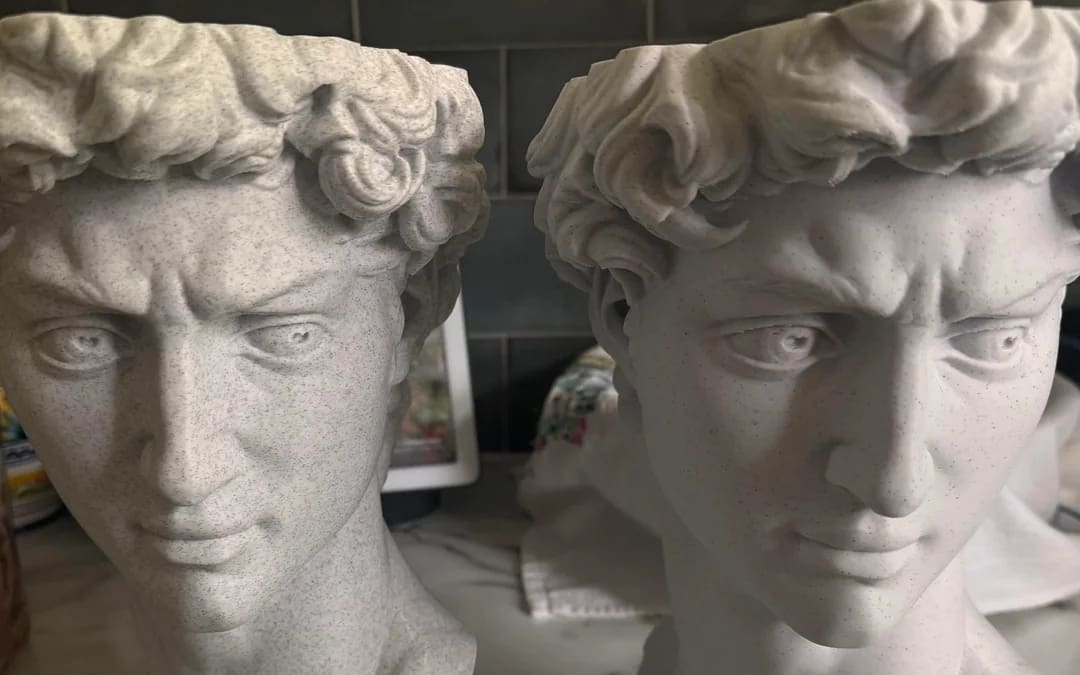
Bambu Lab is well known for their high-speed 3D printers and has even created their own line of filaments. It’s no surprise to see that they have come out with their own marble PLA as well.
Makers have noted that the Bambu Lab marble PLA has more densely packed particles than many marble PLA filaments, which some users prefer while others prefer a more subtle marble appearance. They offer white and red variations that both have a marble-like texture to them.
Like every spool of Bambu Lab filament, their marble PLA variants each come with an RFID tag that automatically lets your AMS unit identify the spool’s color and sets your print settings accordingly. Bambu Lab recommends a hardened steel nozzle when printing with their marble PLA, though they advertise that a stainless steel nozzle is still sufficient.
- Colors: White marble, red granite
- Sizes: 1.75 mm (1 kg)
- Recommend settings: Hot end 190-230 °C; heated bed 35-45 °C
- Price per kg: ~$30
Prusament
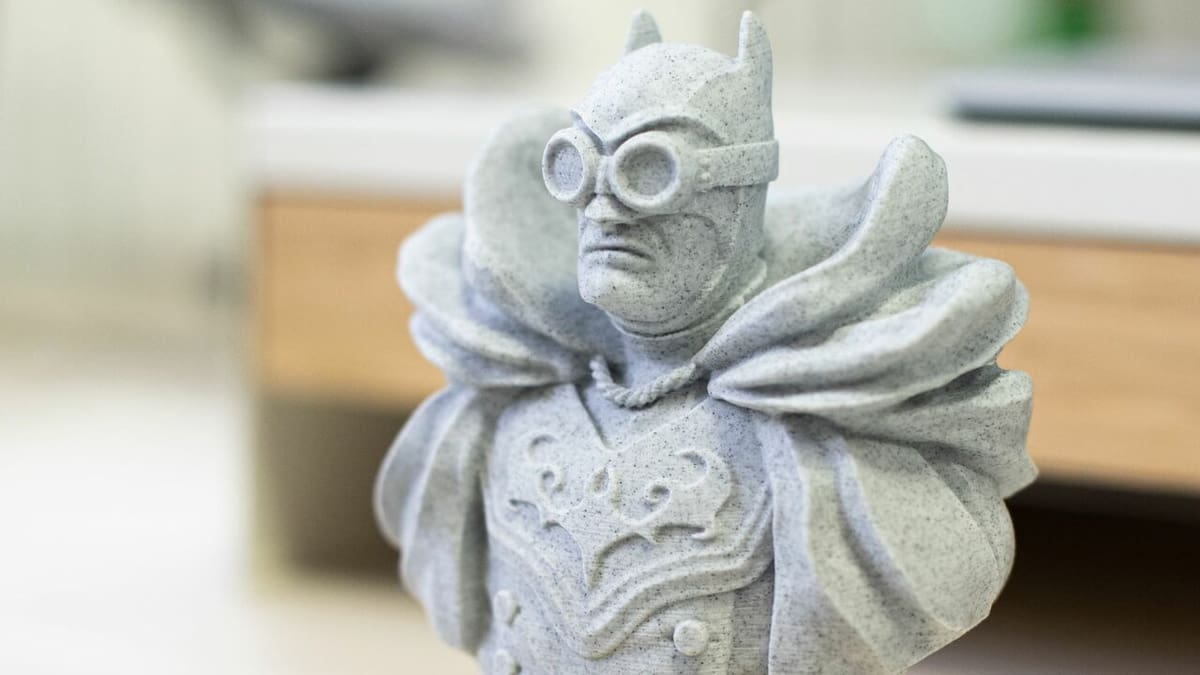
Prusa is a household name within the 3D printing industry, although less so for their filaments. They sell a wide range of different options, and while their PETG is renowned for its quality, some of their more exotic filaments are less well known.
Their light gray marble PLA is designed to print well on Prusa Mk3s. While good experiences have been noted, you may have issues with clogging or stringing. These problems can usually be solved with a slightly lower temperature.
This filament comes in at a reasonable price, however, they only produce it in small batches, so you have to keep an eye out as to when to purchase it. At the time of writing, their marble gray PLA is out of stock, but the Prusa team assured us that it will be back in stock in the next several weeks.
- Color: Marble gray
- Size: 1.75 mm (1 kg)
- Recommend settings: Hot end 215 °C; heated bed 50-60 °C
- Price per kg: ~$30
Eryone
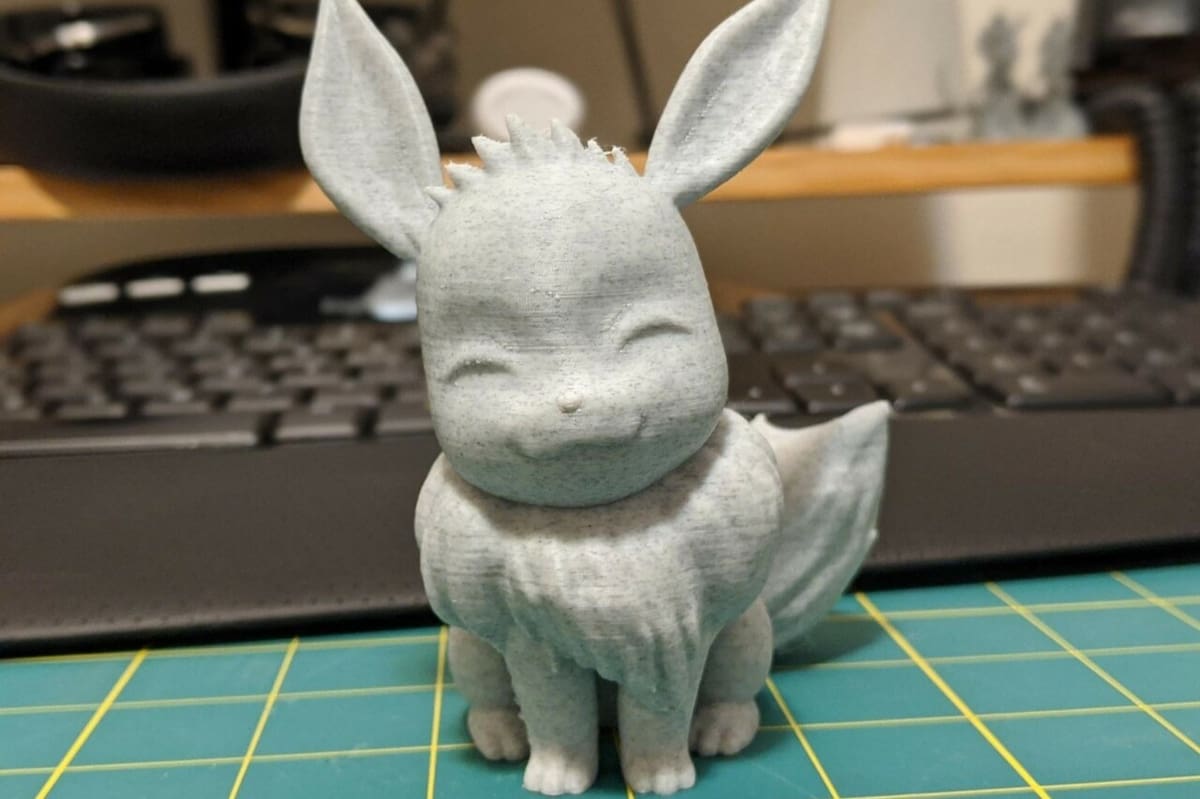
Eryone is another popular manufacturer that makes filaments, resins, and even 3D printers. Eryone’s marble PLA mixes PLA and ultrafine marble particles to yield a natural marble-like appearance.
Eryone states that their marble PLA is easy to print with and shouldn’t clog your hot end. The manufacturer recommends drying the filament before use and printing with a speed of 50-100 mm/s.
Despite Eryone’s claims, customer reviews suggest that using this filament may be a little tricky. At Amazon, reviewers mentioned issues of stringing, but don’t worry, we’ve got you covered: there are several easy ways to prevent stringing.
- Color: Marble white
- Sizes: 1.75 mm (1 kg)
- Recommend settings: Hot end 200-220 °C; heated bed 70 °C
- Price per kg: ~$30
Hatchbox
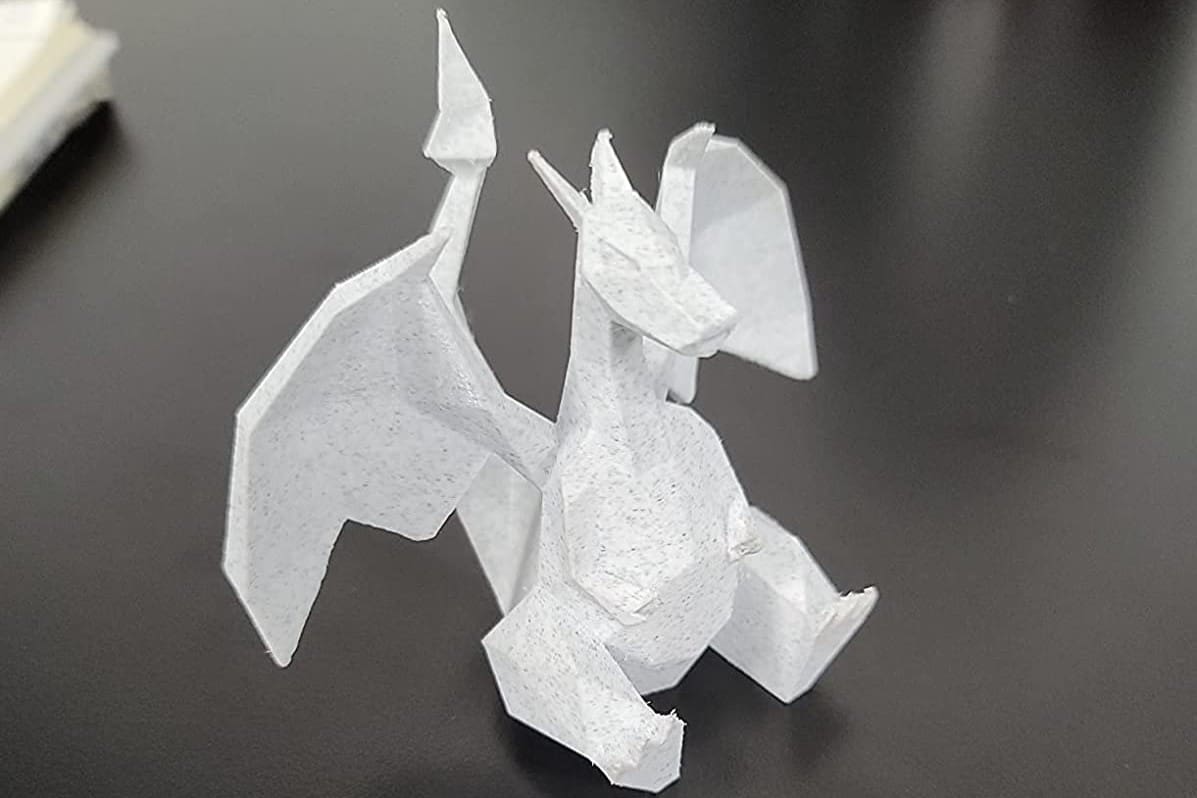
Hatchbox is a well-known filament manufacturer that offers filament at an affordable price. Hatchbox’s Stone series has a real marble, granite, or limestone look, depending on which color you choose. There are six color options in total, four of which have a white PLA base with different-colored specks.
The manufacturer says that Stone PLA doesn’t tangle, clog, bubble, or warp when printed. However, a customer reviewed the filament and revealed that it doesn’t yield good layer-to-layer adhesion, making the prints weaker. Other reviewers found that this filament tends to string a lot, so try bumping up the retraction settings if you can.
- Colors: Six colors including gray, brick red, and white with contrast color specks
- Size: 1.75 mm (1 kg)
- Recommend settings: Hot end 180-220 °C; heated bed not specified
- Price per kg: ~$31
Sunlu
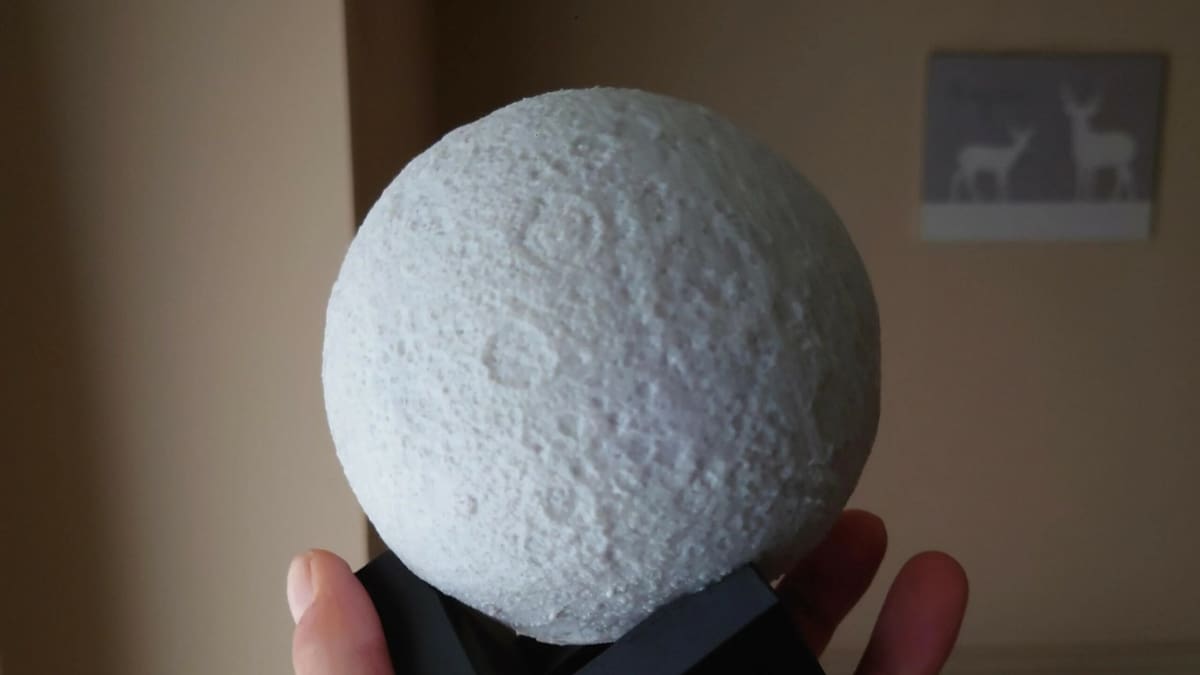
Sunlu is another manufacturer of 3D printer supplies that makes filaments and 3D printing accessories. Sunlu’s marble PLA is filament colored to mimic real marble.
According to the manufacturer, the filament is 100% bubble-free and causes minimal stringing and warping. Sunlu recommends printing this filament with a print speed of 50-100 mm/s. One customer review notes that this filament jams a lot in the hot end, and another found that Sunlu’s marble PLA sticks better to the print bed with some adhesive.
- Color: Marble white
- Size: 1.75 mm (1 kg)
- Recommend settings: 210-220 °C; 50-65 °C
- Price per kg: ~$32
Amolen
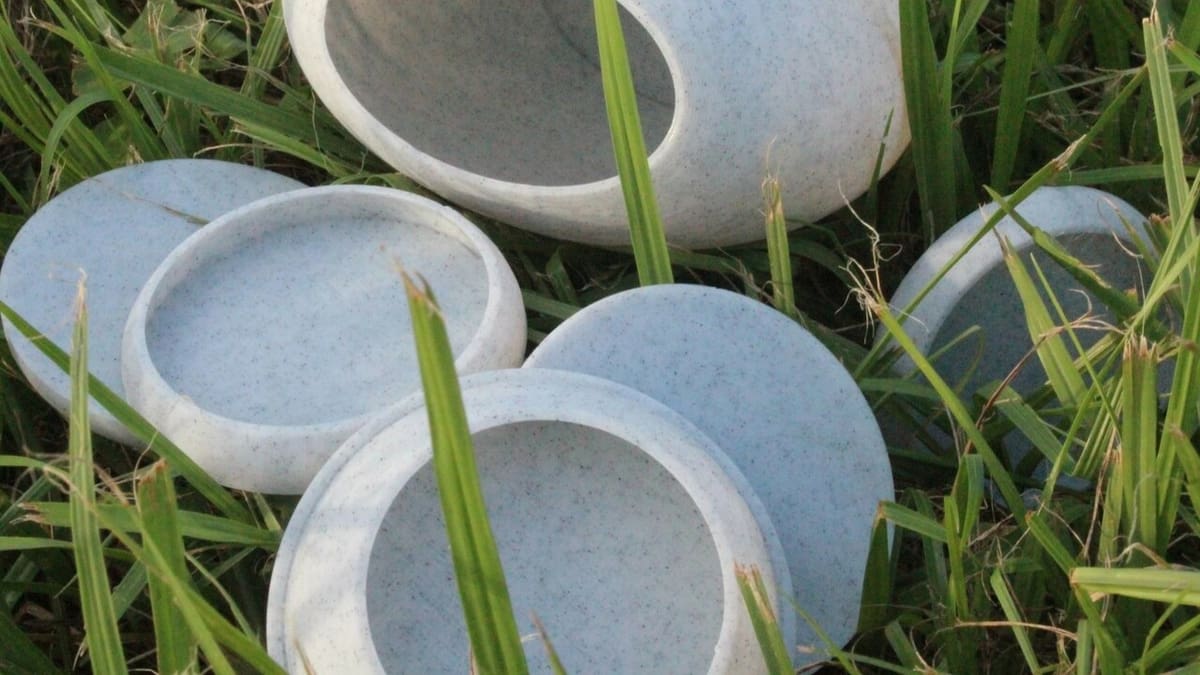
Amolen is a leading manufacturer of unique filament types, including glow-in-the-dark and color-changing variants, among many others. Marble-colored PLA is one of their popular novelty PLA filaments, and it’s made from eco-friendly material sourced from the United States.
According to the manufacturer, prints in their marble PLA boast a similar surface texture to real marble. They also report that the material doesn’t bubble, jam, or warp during printing. However, when we tested the material ourselves, we ran into some bed adhesion problems, but these were easily resolved by applying additional adhesives.
- Colors: Nine colors, including marble white, fossil granite, and various rock types
- Sizes: 1.75 mm (1 kg)
- Recommended settings: Hot end 190-220 ºC; heated bed 0-50 ºC
- Price per kg: ~$33
3DTomorrow (Europe & UK Only)
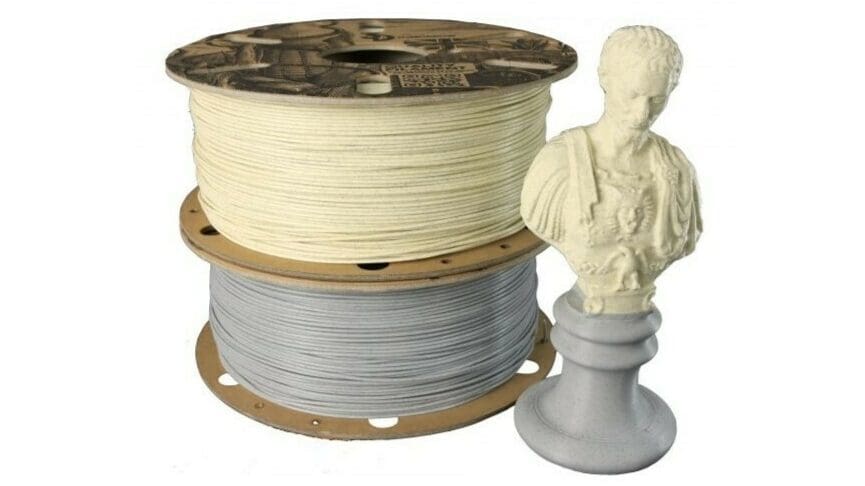
We thought that 3DTomorrow’s filament was too nice to leave off the list. While it’s mainly available in the UK and Europe, they sell a beautiful range of filaments. And what’s more, they’re becoming increasingly sustainable, offering rolls without reels and cardboard reels as standard.
Among many things, 3DTomorrow sells marble PLA. They call it Geo PLA, and it’s available in two colors: aged granite and cotswold lime. These are great alternatives if you want a creamier marble PLA.
They claim that their filaments have great interlayer adhesion, low warpage, and are well-spooled. Filament Stories reviewed it, and the results were pretty stunning. They advise printing at 45 mm/sec.
- Colors: Cotswold lime, aged granite
- Size: 1.75 mm (1 kg)
- Recommend settings: Hot end 200-235 °C (220 °C advised); heated bed 40 – 60 °C (50 °C advised)
- Price per kg: ~$35
Fiberlogy
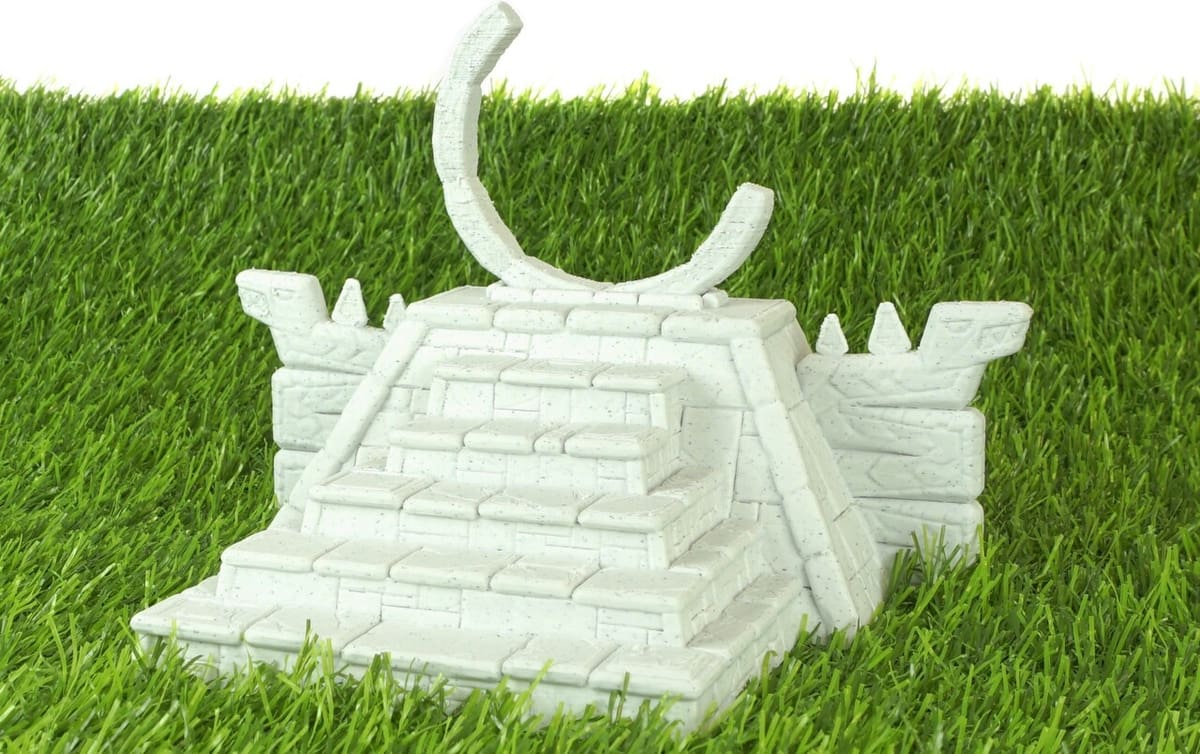
Fiberlogy is a unique company offering a wide range of different filaments and materials. They have a range of “mineral” PLAs, and the company reports the inclusion of chalk to achieve a satin surface finish.
Their marble PLA is designed with high tolerances, and care is taken to ensure that their filaments are circular in profile (the oval tolerance is ±0.01 mm). All this means that the filament won’t string as much as others when printed on a printer with a Bowden extruder. However, that extra care does come at a premium cost, punching in at about $51 per kg.
- Colors: Marble, white, black, concrete, and natural
- Sizes: 1.75 mm, 2.85 mm (0.85 kg)
- Recommend settings: Hot end 190-210 °C; heated bed 50-70 °C
- Price per kg: ~$51 (~$43 per 0.85 kg)
MatterHackers
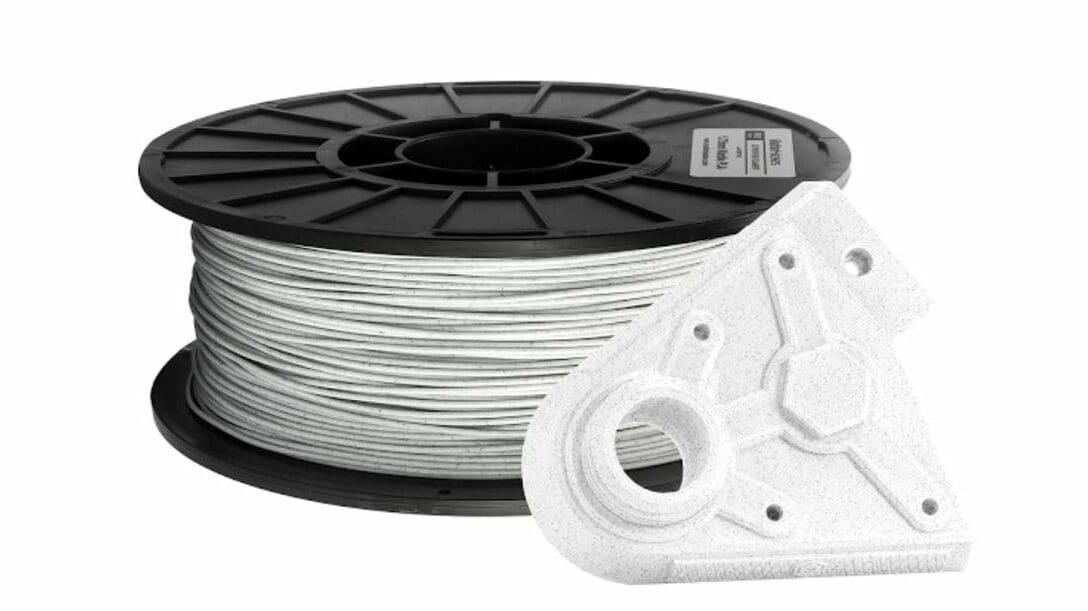
MatterHackers is a well-known filament 3D printing supply online store that sells a plethora of different filament brands, 3D printers, nozzles, and more. Their Marble Pro Series PLA is a textured and speckled white filament, but they also offer a Parthenon Gray in their Marble Pro Series PETG. The raw materials for their marble PLA are sourced from NatureWorks, specifically their 4043D Ingeo raw plastic.
MatterHackers states that their marble PLA filament has great tensile and flexural strength and is easy to print. They also provide the external and internal spool dimensions for this filament, so you can ensure this spool is compatible with your printer.
- Color: Marble (parthenon gray available in PETG)
- Sizes: 1.75 mm, 2.85 mm (1 kg)
- Recommend settings: Hot end 190-220 °C; heated bed not specified
- Price per kg: $52
License: The text of "Best Marble PLA Filaments: 15 Brands We Love" by All3DP is licensed under a Creative Commons Attribution 4.0 International License.
CERTAIN CONTENT THAT APPEARS ON THIS SITE COMES FROM AMAZON. THIS CONTENT IS PROVIDED ‘AS IS’ AND IS SUBJECT TO CHANGE OR REMOVAL AT ANY TIME.

